Slums are one of the biggest challenges for Sustainable Development, especially in rapidly urbanising regions in Africa, the Caribbean, and the Pacific, where, in many cities, more than half of the population lives in slums.
Slums exacerbate inequality, limit access to essential services, and heighten vulnerability to disasters, with slum dwellers facing disproportionately lower life expectancies, higher morbidity rates and a lack of opportunities. The COVID pandemic further exposed these vulnerabilities, emphasising the need for urgent action. Therefore, slum upgrading is essential to addressing urban poverty, achieving social equity, and meeting global development goals.
The Participatory Slum Upgrading Programme (PSUP): A Transformative Approach
The Participatory Slum Upgrading Programme (PSUP) is a joint initiative carried out from 2008 to 2022 between UN-Habitat, the Africa, Caribbean and Pacific (ACP) Secretariat, and the European Commission. The Programme equipped countries with tools to improve the living conditions of slum dwellers while preventing the proliferation of new slums, aiming to integrate slum upgrading into national urban policies and align local development goals with global agendas.
PSUP began as a multi-phase initiative to address the urgent need for sustainable improvements in slums and informal settlements in ACP countries. Each phase - PSUP I, PSUP II, and PSUP III - built upon the previous, gradually expanding the scope, tools, and impact of the programme. PSUP I established a foundation of knowledge, creating baselines through urban profiling and building local capacity for participatory planning. PSUP II developed citywide strategies and implemented pilot projects. Finally, the PSUP III phase focused on scaling up interventions, mainstreaming slum upgrading into national policies, and securing larger financing commitments for widespread implementation.
The programme put slum dwellers at the centre to state how they want to live in the future and play a decisive role in developing their communities. In addition, it encouraged national and local governments to mobilise resources and contribute financially to address structural problems faced by slum dwellers, it guided financially viable large-scale programmes and projects to improve slums, and it implemented a city-wide approach to integrate slum upgrading with the city's wider development strategies and plans.
Key achievements
-
Through partnership with 190 cities across 40 ACP countries, PSUP III facilitated 124 community projects, impacting directly and indirectly over 15 million people and mobilising €10 million in direct and in-kind co-financing.
-
PSUP III helped establish 37 citywide strategies and 21 national policies in ACP countries to guide ongoing slum upgrading initiatives, with some countries establishing major policy shifts, moving from project-based to institutionalised, strategic approaches.
-
A Global Action Plan (GAP) emerged through PSUP that emphasises multi-stakeholder approaches, spatial justice, and equitable resource allocation. It builds on a global momentum created around slum upgrading, and can be further tailored to the needs of each country through their different entry points.
Lessons learnt
-
Empowering residents through direct participation in neighbourhood planning and project implementation is essential for long-term success. In this sense, community-managed funds proved to be a powerful tool.
-
In-situ upgrading (improving existing settlements) is generally more effective than resettlement, preserving social networks and cultural contexts. Strategies and decision-making should be driven by reliable data to tailor interventions and supported with blended financing models, which are key to overcoming funding gaps.
-
Overall, slums should be viewed not as isolated problems but as part of the urban ecosystem, with solutions embedded in larger urban development and planning processes, as well as environmental resilience and building robust governance structures.
-
The results of PSUP and analysis of countries’ status and progress after 2022 have led to a total of 25 countries having institutionalised responses and continuing their path beyond PSUP. Future entry points were also identified for each country, with key priorities for action considering infrastructure development, affordable housing, tenure security and climate resilience for disaster risk reduction.
Challenges, opportunities and the way forward
There are remaining challenges for slum upgrading, such as financing gaps, political instability or shifting priorities, difficulties on land tenure, infrastructure deficits and increasing climate and environmental vulnerabilities. But lessons learnt from PSUP have pointed out some successful pathways forward. Mainstreaming slum upgrading into national and local strategies is key. And, as implementation of any plans or strategies requires sufficient funding, blending financing mechanisms that mobilise greater resources is necessary.
At the same time, it should be central in global dialogues and policies regarding Sustainable Development. In this sense, the Global Action Plan consolidates global efforts to address slums in alignment with the SDGs and the New Urban Agenda, creating a cohesive strategy for national and local governments, international organisations, and civil society. GAP emphasises immediate and scalable actions, integrating climate adaptation and disaster risk reduction, which is crucial for protecting vulnerable slum populations from worsening climate impacts.
Currently, approximately 56% of the world’s population lives in cities. That’s 4.4 billion people, and this number is expected to double by 2030, which means 70% of the population will be urban by then. Although progress has been made in slum upgrading, without further action, the slum population is expected to triple in the coming decades1 just by the effect of rapid urbanisation, especially in developing countries. This means the scale of the problem is now bigger than 20 years ago.
Furthermore, slum upgrading aligns with broader priorities like climate resilience, disaster risk reduction, and human rights and is essential to achieve SDGs and ensure equitable access to resources, services, and opportunities: with 1.1 billion people living in slums, most of them non registered, they are left out of policies, programmes and statistics. Addressing slums is thus a prerequisite to tackle every issue, from poverty and hunger to health, education or equality. One that is becoming more urgent as we advance in the Decade of Action to achieve the SDGs by 2030.
|
Best practice: the case of Cameroon Cameroon stands out as a leader in slum upgrading through its innovative integration of participatory approaches into national policy and its ability to mobilise diverse investments. The country developed a comprehensive National Informal Settlements Upgrading Strategy that institutionalised slum upgrading, ensuring its alignment with broader urban policies, such as the National Urban Policy, and emphasising decentralised governance. A multi-stakeholder country team, comprising representatives from communities, local authorities, and national agencies, played a pivotal role in driving these reforms, establishing participatory planning as a pre-condition for local governments to access funding. Cameroon also demonstrated exceptional success in attracting investments through a blended financing model. It has fully institutionalised its participatory approach by establishing tripartite funding mechanisms involving:
This model enabled 11 cities to conduct assessment studies, with two progressing to implementation financing, and the City of Bamenda as the first case where all the institutionalised tripartite mechanisms for upscaling have been applied. It showcases a sustainable, scalable framework for slum upgrading, setting a replicable model for other cities in Cameroon and beyond. After PSUP ended, the Government of Cameroon has institutionalised the participatory approach to slum upgrading through budgetary support to the Decentralised Territorial Collectives (DTCs) to produce urban planning documents. Furthermore, slum upgrading is intertwined into other programmes such as the Inclusive and Resilient Cities Development Project (PDVR), funded by the World Bank or the Climate Adaptation Strategy for Bamenda, which can be scaled up and replicated. |
1. UN-Habitat, 2024. Sub-Saharan Africa shows the sharpest rise in slums, with a 77% increase in the total number of slum dwellers between 2000 and 2020. According to statistics, every thirty years the population in African cities is doubling. The same trend is expected to continue by 2050. Rapid urbanisation is linked to very low GDP levels, with per capita GDP decreasing, leading to poverty.
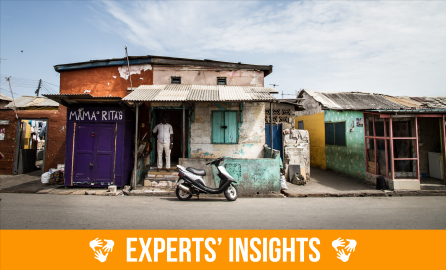

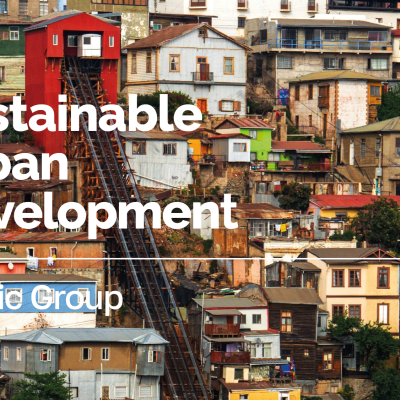
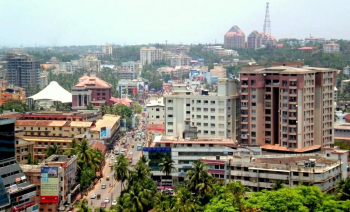
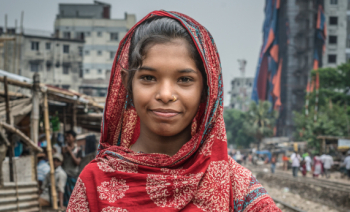
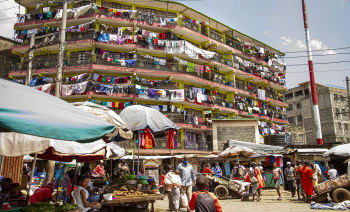
(1)
Log in with your EU Login account to post or comment on the platform.
Can you explain when will Hungary receive economic development support from EU level. I am open for peace negotiations. Provide quality job for rural Hungarian people.